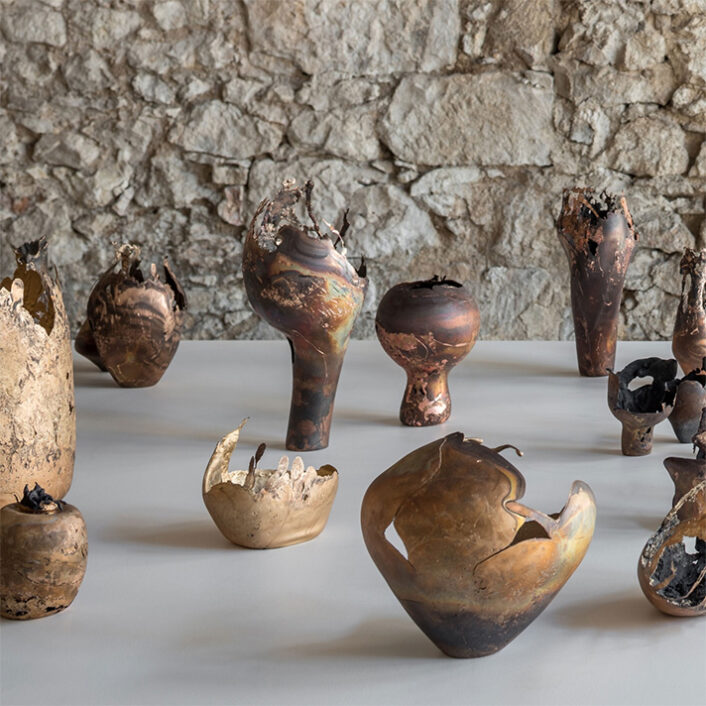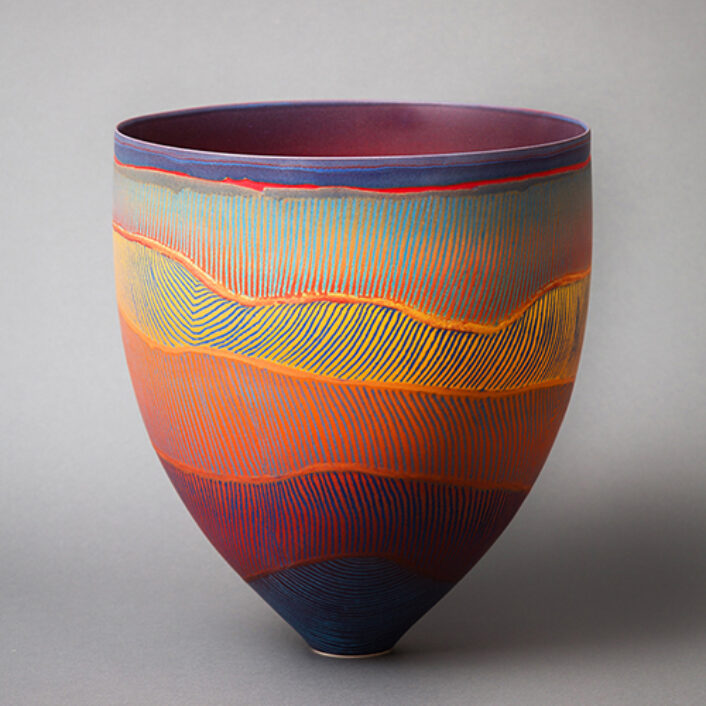Design
T-SAKTI
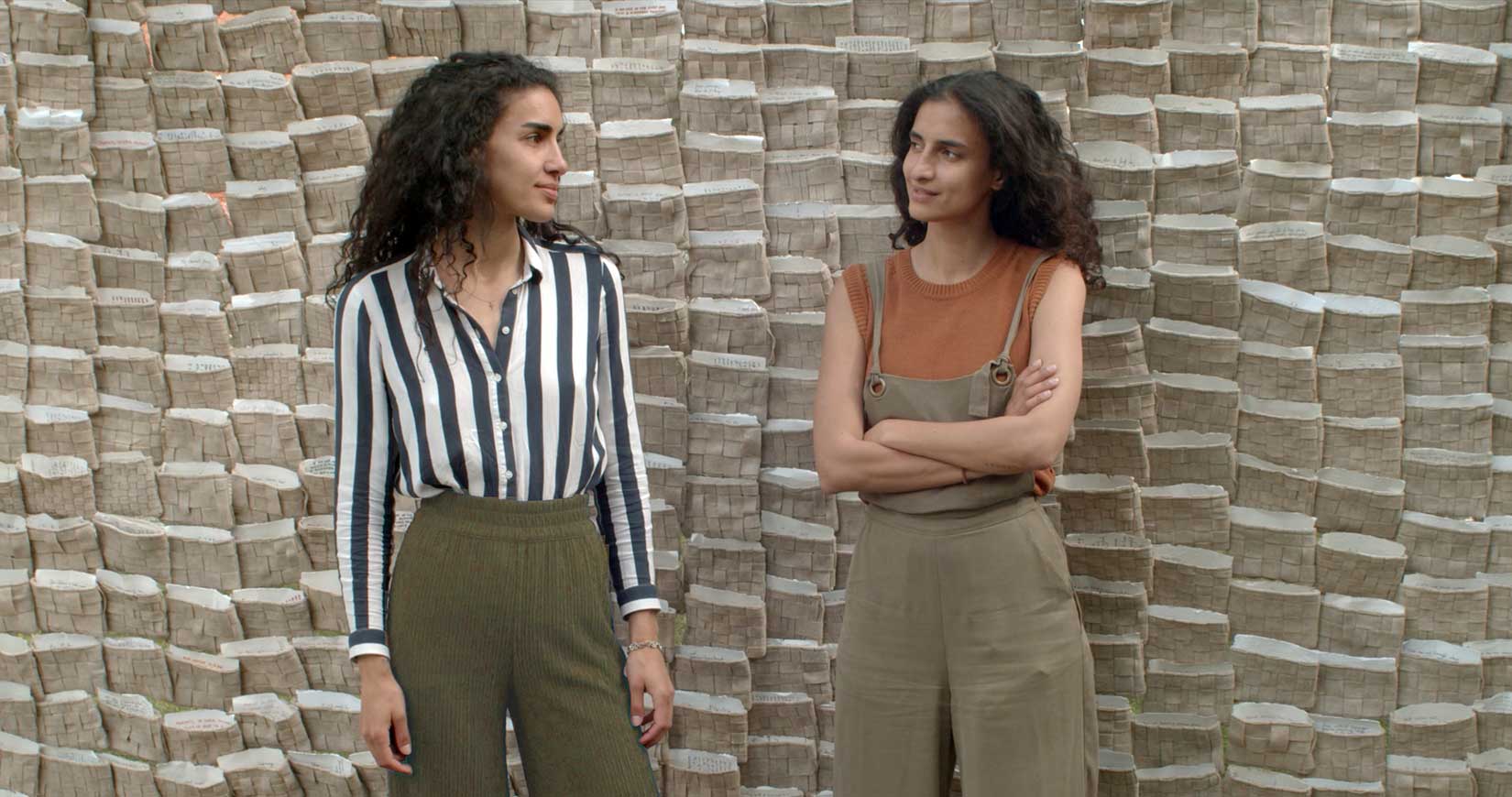
The sisters standing in front of their 20-foot linear wall installation, “Letters from Beirut” at the Venice Biennale 2021. This installation honors the Lebanese community that survived the horrific bombings last year.
Image courtesy of: Identity, photographed by: Clemente Ciarrocca
T-SAKHI is an international multi-disciplinary studio founded by two Lebanese-Polish sisters in 2016. Based in both Venice and Beirut, the mission is to focus on sustainability by recycling waste materials to produce crafted collectables in new shapes, forms, and textures.
The sisters are cognizant that living in a high-paced world naturally leads to disconnection.. even though we are constantly connected through social media. As such, they hope their work evokes a sense of connection and compassion as they collaborate with artisans from different cultures. Hopefully, the end result is a productive and efficient dialogue and idea exchange that points towards craftsmanship and collective innovation.
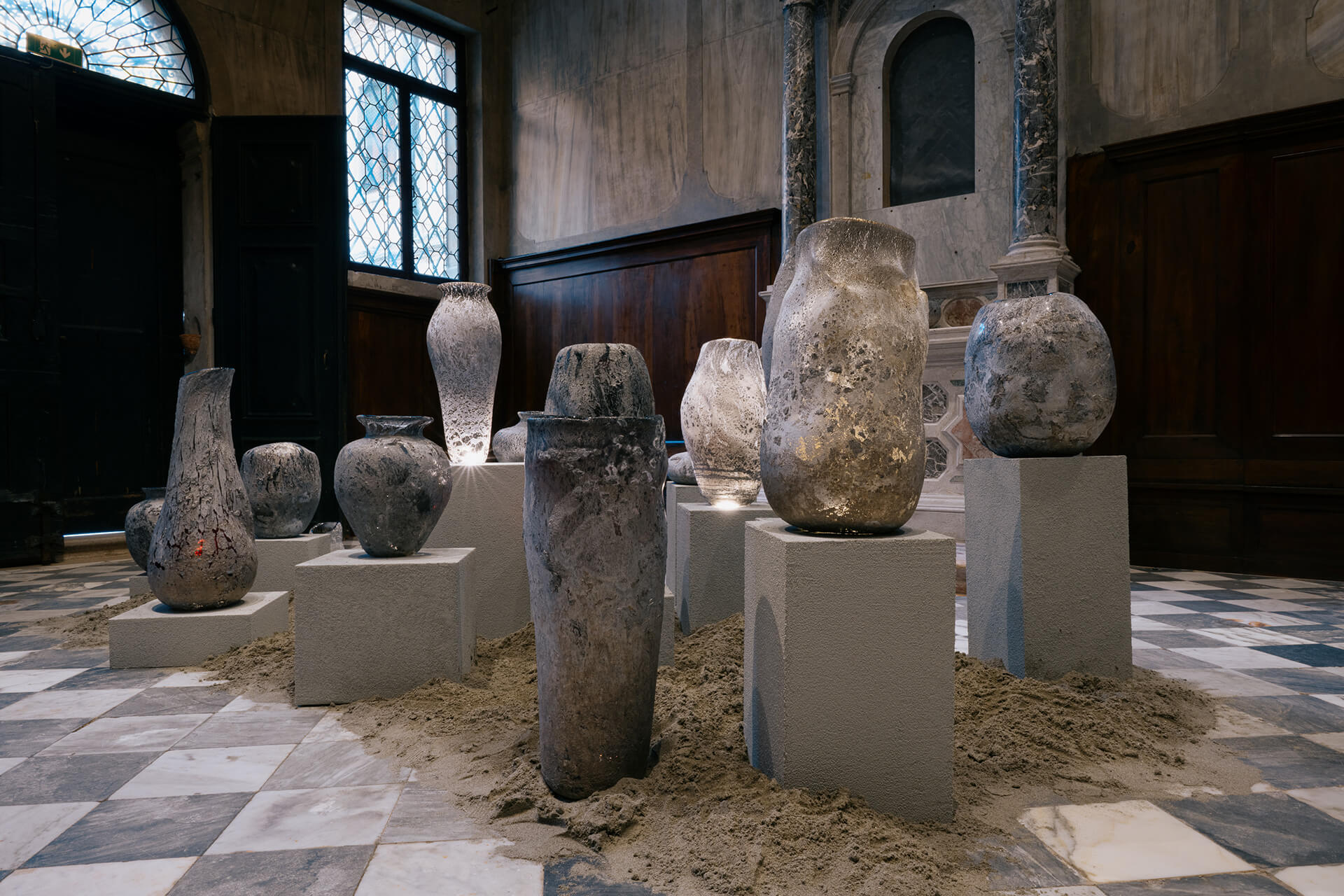
“I Heard You Tremble #15,” mixed media, 2022.
Image courtesy of: Stir World, photographed by: Lorenzo Basadonna Scarpa
Last year, the sisters presented at the prestigious Italian Glass Week in Venice. For the past three years, the pair has been conducting research and experimenting into incorporating waste metal from the factories near Murano into their vessels. The exhibition titled “Jurat,” featured twenty one unique vessels. Jurat means “urns” in Arabic; and is fitting for the collection that was inspired by archeological urns from ancient Egypt.
In partnership with Le LAB, a self-proclaimed experimental atelier founded by an Egyptian collector, this was T-SAKTI’s first solo exhibition. In assemblage were vessels that were produced from the disregarded metal waste found near the island’s metal factories. Courtesy of Surface Magazine, the sculptures “underwent diverse international deformations by poking, compressing, or stretching them while observing how our controlled technique paired with the uncontrolled nature of the glass-metal material manifest in a diversity of results.”
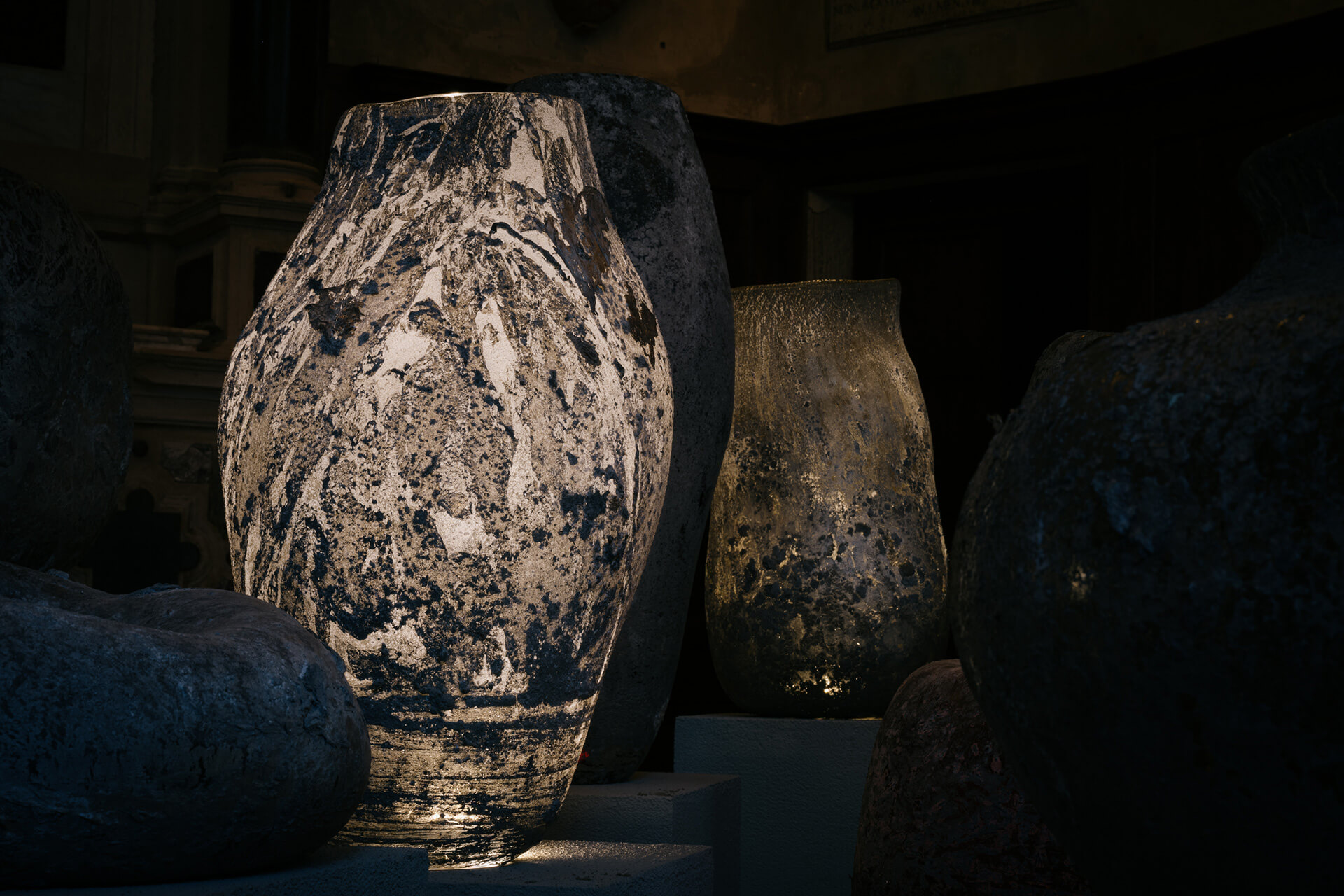
“I Hear You Tremble #18,” mixed media, 2022.
Image courtesy of: Stir World, photographed by: Lorenzo Basadonna Scarpa
Specifically, this “Jurat” was a result of a material research workshop with Murano glassblowers that the women attended in 2017. At that time, they learned a technique that involved “infusing metal waste (under powered and molten state) within Murano glass at different stages of the process and at different temperatures calibers, resulting in indissociable rock formation-like textures. ”
T-SAKHI sources various types of metal waste including brass, copper, and aluminum, from surrounding factories. The complicated learning process entailed mastering how to work with different metals in various states including molten, powder, and chunks, and exposing them to divergent temperature calibers.
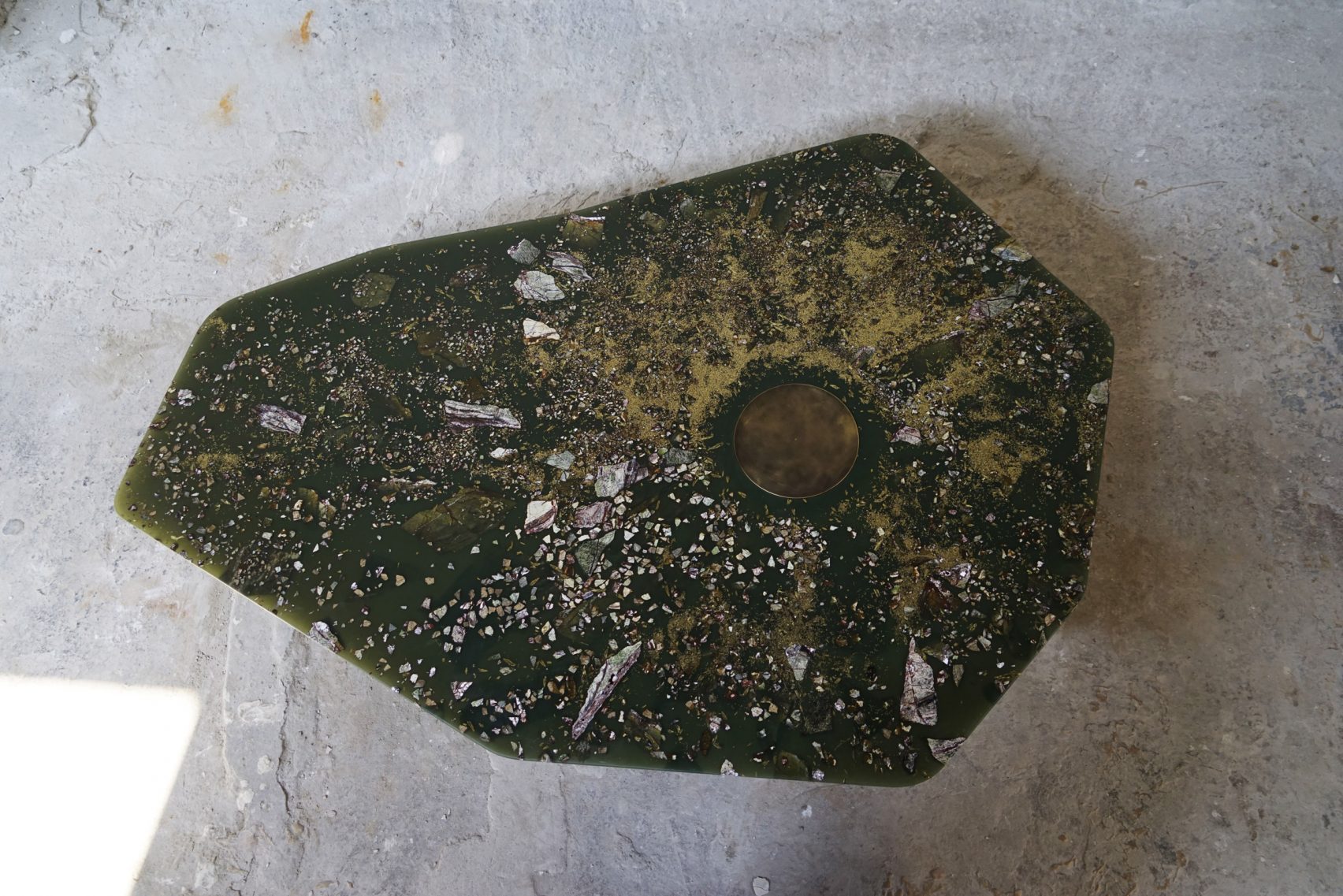
The “Reconciled Fragments” collection has a small and large table. Here, the unique table looks like “crushed materials erupting from a nucleus.”
Image courtesy of: Dezeen
Staying with the theme of environmental consciousness, the collection “Reconciled Fragments” occurred as a result of collecting and recycling decomposed and fragmented materials and making them whole again. The emergent one-of-a-kind tables include pieces of stone and marble (onyx, travertine, Amazonite, etc.), in addition to a concentration of metal powder (copper, aluminum, brass, etc.).
The two-piece collection was produced solely by Lebanese craftsmen. This was a way to negate a bit of the damage that the economic collapse and the years-long political upheaval in the country has caused. Tara Sakhi told Dezeen, “Lebanese craftsmen have an incredible know-how and we as designers learn immensely while working with them. The experiments resulted in a wide array of extra-terrestrial stone-like formations between the two materials. They also attained lava stone-like textures that allow light to filter through the translucent glass-metal material.”
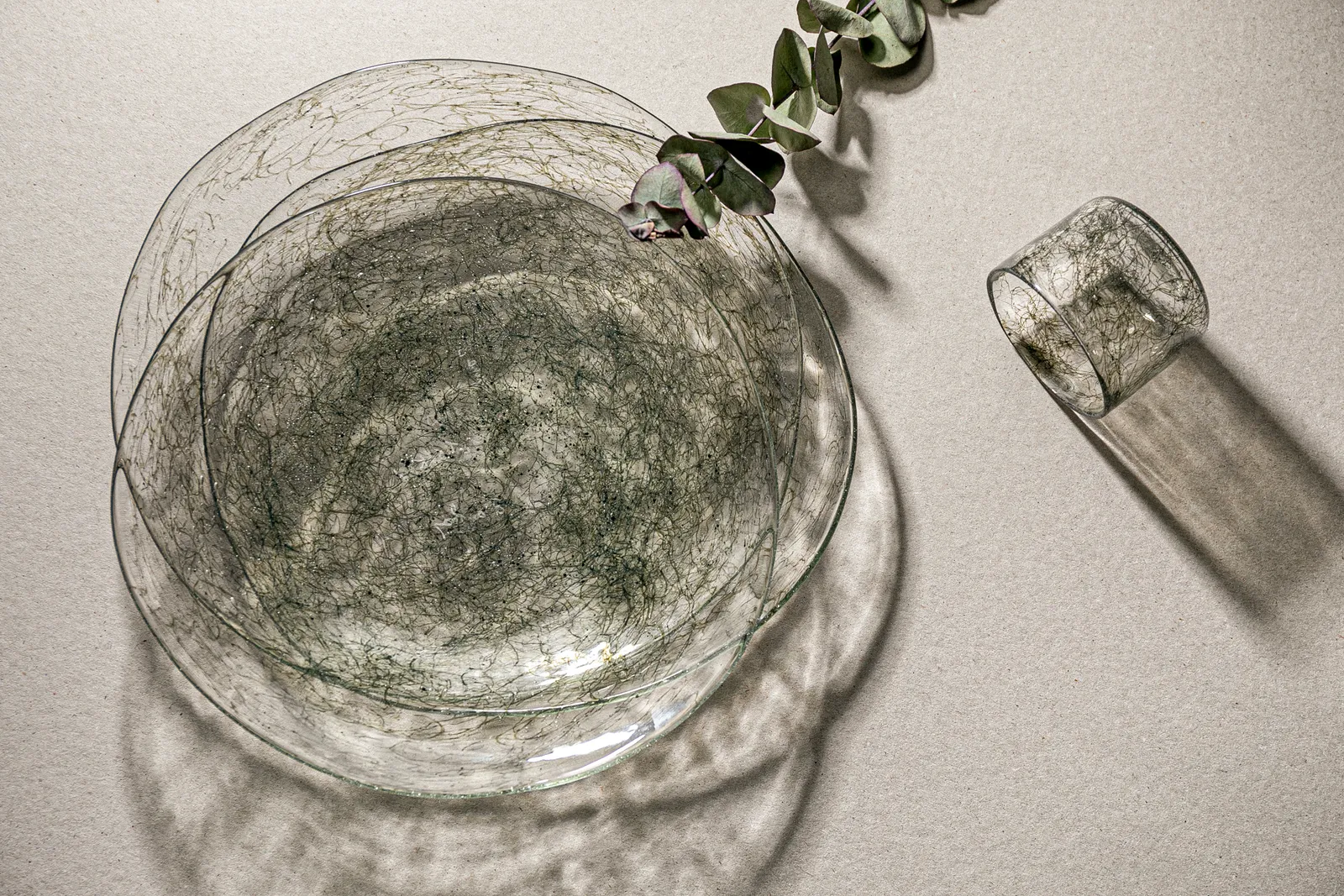
“Tasting Threads,” a tableware collection produced by Murano artisans. The collection includes a series of plates and glasses in different dimensions. Plates include flat plates and deep bowls and glasses include shot glasses, and wide, small glasses for beverages that require ice and narrow, long glasses to serve water.
Image courtesy of: Architectural Digest Russia
Endlessly drawn to the rich history of blown glass, the sisters found themselves making connections between the medium’s historical and contemporary uses; as well as lamenting on a shared knowledge of glassmaking in Murano, Italy and Lebanon. With glassware production sites discovered in Mesopotamia and modern-day Egypt, Syria, and the Mediterranean in the Hellenistic age, folklore recognizes that there was a combination of metals and other mediums even eons ago. We would be remiss not to call the Sakhi sisters’ works a marvel at alchemy.
Venturing into the tablescapes arena, T-SAKHI recently introduced “Textured Threads.” The pieces are made by infusing reed steel threads into Murano glass. The process results in unplanned-for shapes and the colors that range from amethyst to ruby to cobalt. Gorgeous indeed!
